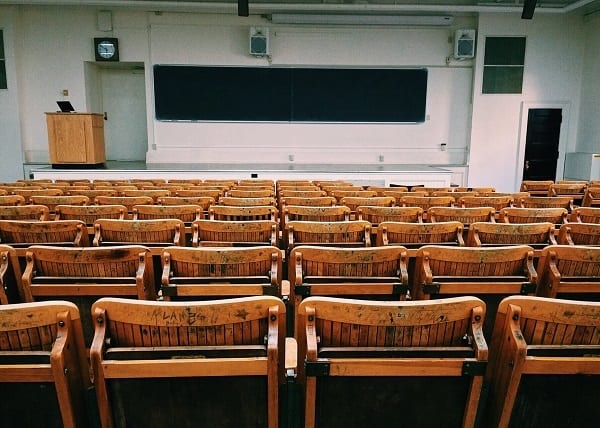BALTIMORE, MD—At the October meeting of the State Board of Education, State Superintendent of Schools Karen B. Salmon, Ph.D. continued to encourage local school systems to safely return students to schools for in-person instruction in accordance with Stage 3 of Maryland Together: Maryland’s Recovery Plan for EducationMaryland Together: Maryland’s Recovery Plan for Education.
State health metrics continue to remain among the lowest nationally and national research indicates that school community infection rates continue to stay well below those in the community at-large.
Maryland Department of Health (MDH) and Maryland State Department of Education (MSDE) issued guidance and metrics during the summer that provides step-by-step directions for response to confirmed and suspected cases of coronavirus in schools.
Education officials stressed that virtual learning cannot fully replace in-person instruction, especially for low-income, special-education students, as well as those vulnerable to abuse. To date, 19 school systems have opened schools for small group instruction or the start of hybrid instruction.
“It has been said that true leaders act during chaotic times and it is our responsibility as educators to take action now that will return students to in-person instruction. The stakes could not be higher,” said State Superintendent Karen B. Salmon, Ph.D. “Remote learning cannot replace students’ experiences with their teachers, administrators, and support staff. One might make the argument that any risk is too great and that schools must be completely safe before local school systems move towards any in-person instruction. But this approach disregards the enormous costs to children from keeping school buildings closed.”
An estimate from McKinsey and Company suggests that, if schools don’t return to in-person schooling until January 2021, students could lose between 3 and eleven months of learning, depending on the quality of the remote learning. According to a recent study published in JAMA Pediatrics, school closures may be especially disruptive for children from lower-income families, who are disproportionately likely to receive mental health services exclusively from schools. Locally, the Baltimore Child Abuse Center stated reports of abuse plummeted by more than 70% during the early weeks for the pandemic, with vulnerable people further compromised by lack of contact and access to teachers, coaches, co-workers, neighbors and family members.
MDSE officials stated that students with disabilities benefit the most from face-to-face experiences and require extensive, intensive, and individualized instruction/supports to narrow achieve gaps. Maryland local school systems and public agencies serve approximately 160,000 infants, toddlers, young children, and students with disabilities across the State annually (just over 12% of the school age population) with special education and related services tailored to individual needs.
Superintendent Dr. Salmon continued, “We must all unite in our efforts to maintain equitable learning opportunities and safely return students to their schools. Rather than focusing on obstacles that impede that goal, we must focus on solutions that will overcome them. The necessary health guidance is available to local school systems, and MSDE stands ready to work together through continued partnership and collaboration.”
Health metrics for the conditions necessary to return to school were provided by the Maryland Department of Health (MDH) in joint guidance issued with MSDE on August 28th. These metrics examine the positivity rate and rate of new cases in a jurisdiction and offer recommendations for a mode of instruction within that framework. For example, if a system is in a county where the positivity rate is greater than 5 percent and the new case rate is more than 15 per 100,000 residents, the suggestion is to have limited or no in-person programs in schools. Local systems make final decisions on the utilization of the guidance and reopening.
MDH and MSDE released specific guidance and a decision aid on July 23rd that provides step-by-step directions to identify, isolate, quarantine and return students and staff that are exhibiting symptoms of COVID-19 or have been exposed to the virus.
During the summer months, MSDE coordinated with the Maryland Emergency Management Agency (MEMA) and other State agency partners to distribute over 570,000 masks, 162,000 gloves, 17,500 gowns, and 10,500 face shields to local schools systems. MSDE will continue the effort to facilitate distribution of additional needed personal protective equipment to local school systems, and will deliver another 1.5 million masks to distribute along with an anticipated 57,000 bottles of hand sanitizer.
MSDE, along with MDH, continues to monitor and respond to State health metrics, as well as guidance by the Centers for Disease Control and other national research, especially with respect to testing and vaccinating. Vaccination plans and discussion of dashboards to report local school health metrics continue to evolve.
Finally, the Maryland State Board of Education is working with MSDE to create an initial draft Statewide Recovery Plan Dashboard/Scorecard. The objectives are to create a visual, easy-to-understand presentation of the recovery status and serve as a focal point for mobilizing support and resources to address areas of concern. Work will continue to identify the optimum set of measures.
Do you value local journalism? Support NottinghamMD.com today.

